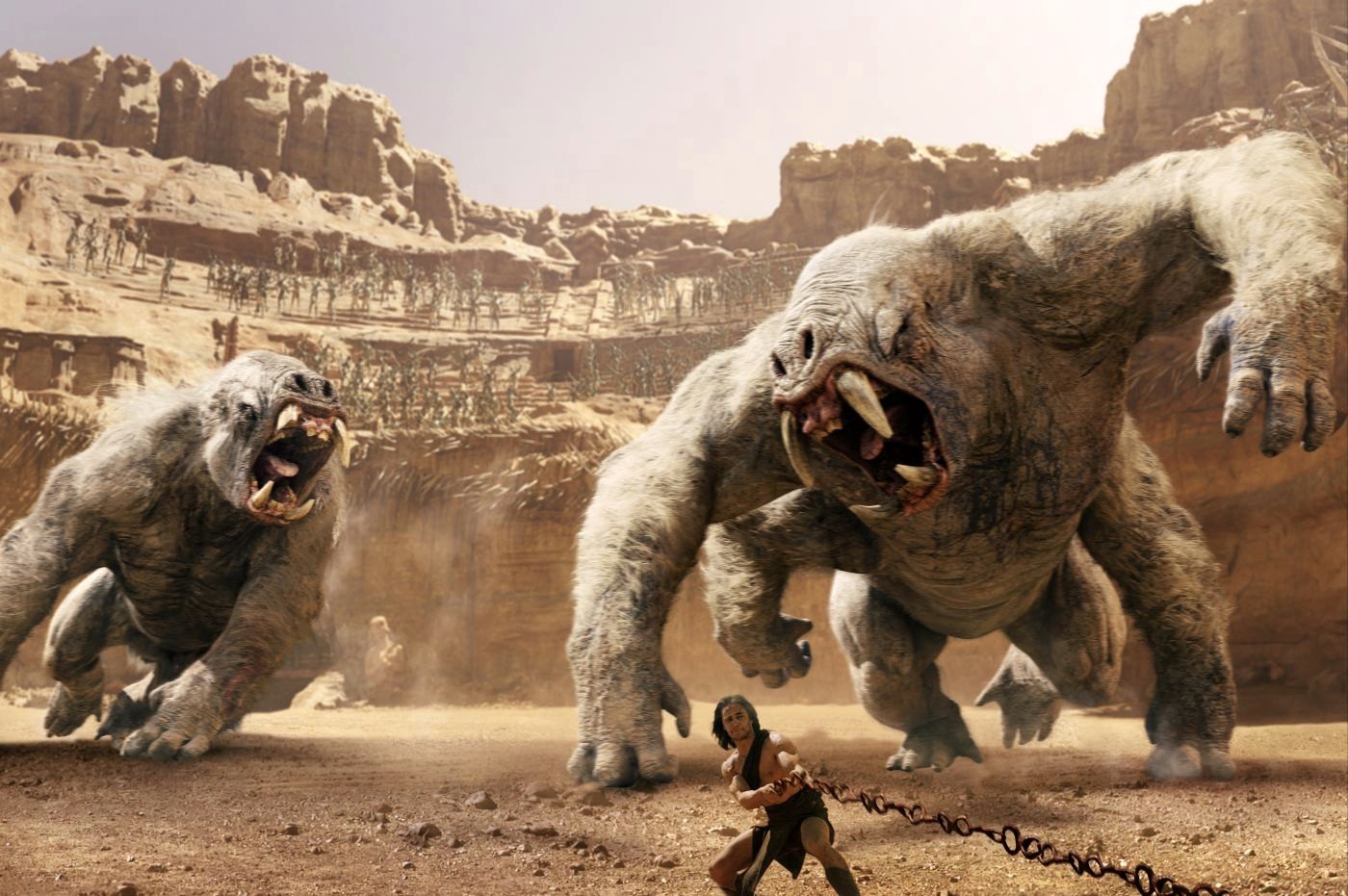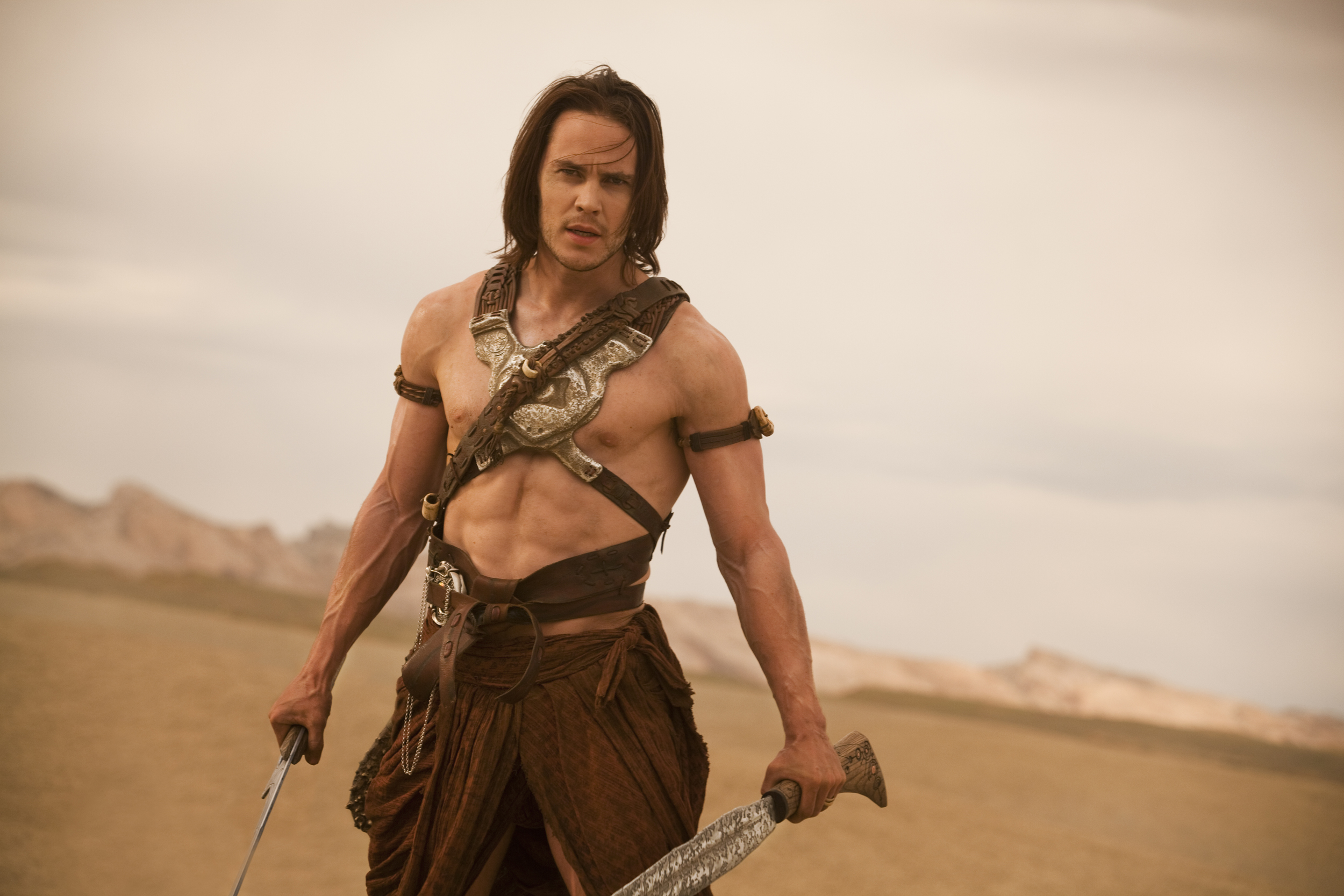
John Carter is probably one of the oldest action heroes in American literature to not have any kind of cinematic treatment – until now. Invented by the Tarzan writer Edgar Rice Burroughs (before he has brought Tarzan to life), John Carter made his debut in 1912 in the pulp magazine The All-Story as a serial titled Under the Moons of Mars. Once Burroughs’ Tarzan proved to be an overwhelming success, the serial was published as a complete novel titled A Princess of Mars. Ten sequels followed exploring the world of Barsoom (the Martian name for Mars) with John Carter appearing in most of them. With the series going on until 1964, it makes John Carter also one of the more prolific literary action heroes too. It might seem a bit surprising that despite this apparent success John Carter has never been adapted for movie theatres in any form.

There are several reasons for that. First of all, as far as Burroughs’ works go, John Carter has always been overshadowed by Tarzan’s popularity. The pulpy and trashy appeal of the series didn’t look all too promising for a movie. Moreover, the visual effects just weren’t ready yet to bring Burroughs’ imagined visuals to the big screen. Another important reason was that a lot of other science fiction works drew heavily upon John Carter. Flash Gordon and Star Wars just to name two of those. The problem was that while these series of films became popular, John Carter was more and more forgotten. Even though it were the other works that ripped off John Carter, in retrospect it seemed like John Carter would be trying to cash in on the popularity of similar works. That is not to say that Burroughs didn’t use some works preceding his as an inspiration as well – The Time Machine by H. G. Wells come to mind. That and ongoing budgetary concerns from the studios made a John Carter movie one of the longest gestating projects in Hollywood. It went from MGM to Walt Disney to Paramount (where it was supposed to be helmed by Robert Rodriguez at one point) and back to Walt Disney. There it finally found its home and in November 2009 cameras rolled for the $250 million movie, making it one of the most expensive movies in history. More than two years later, John Carter finally hits the silver screen – exactly 100 years after the first appearance of the character.

The plot certainly doesn’t sound original. The movie kicks off with John Carter’s (Taylor Kitsch) nephew, Edgar Rice Burroughs (played by Daryl Sabara) being summoned by his uncle to his estate. There, he is informed that his uncle suddenly passed away, inheriting him his entire estate. Following that, most of the movie is told in flashbacks as Burroughs reads his uncle’s diary in which he details his adventures. Ten years prior to his death, John Carter is a traumatized Confederate soldier who has lost his family to the Civil War. Disillusioned this highly decorated soldier is apparently only interested in his own wealth and keeps looking for a mythical cave full of gold. While on the run from the Apaches he stumbles upon this cave by chance. However, he gets more than he bargained for. An astral projection of him is transported to Mars (while his body remains in a comatose state on Earth). On Mars (or Barsoom, as the locals call it) he is thrust into an ongoing feud between two humanoid races who can only be distinguished by the color of their robes (red vs. blue). At first, however, he is captured by the Tharks, 10 feet tall, four-armed, tusked and green-skinned barbarian aliens who love gladiator-like arenas for execution carried out by giant monsters. There are also some God-like beings, the Therns who manipulate the entire war for their (never fully explained) benefit. They are led by Hollywood’s currently favourite villain actor Mark Strong (it marks his 6th appearance as a villain in a little over two years). On top of that, there is also a love story involving the Princess of Mars, Dejah Thoris (Lynn Collins). Sounds complicated? It is.

As you might have noticed by now, this adaptation of Burroughs’ first John Carter novel is quite a bit over a mess. This is probably not all that surprising considering how much time the project has been in development and how often it has been written and rewritten trying to make the pulpy character an appearing action hero in our day and age. Disney’s movie is equal parts Avatar, Star Wars, The Time Machine and, yes, Lawrence of Arabia. To take away some fears – this is a far better and more competent movie than Simon Wells’ adaptation of The Time Machine. However, while a lot of science-fiction works obviously drew upon John Carter and it’s not the film’s fault, you can’t help but find the entire enterprise quite predictable, even despite the overly complicated plot. The movie plays up a lot of clichés and does it very much by the book. Basically it is the old story of a foreigner coming into an existing conflict and turning the whole thing around. Kitsch’s John Carter has immense strength and the ability to make 100+ feet long leaps which is explained by the differences in gravity between Mars and Earth. While one can buy that explanation if necessary, it is still hard to ignore that his abilities (and disabilities that come along with them – initially he is not even able to walk properly) vary wildly throughout the film. Whereas he can only jump 10-20 feet at first, it becomes not much of an issue to him to jump from spacecraft to spacecraft or from building to building over extremely long distances. The same inconsistency applies for his strength. This is just one of a plenty logical issues with this film, but you don’t really come to see a pulpy science fiction extravaganza looking for logic, do you? You come for entertainment and that it can offer.
Andrew Stanton proves the right man for the job. John Carter marks the second leap from animation to live action for a Pixar director. Last December, Brad Bird (The Incredibles, Ratatouille) managed the transition smoothly as he delivered a critical and financial hit with Mission: Impossible – Ghost Protocol, reviving the declining franchise. Stanton who has directed Pixar’s Oscar-winning blockbusters Finding Nemo and WALL-E isn’t as successful as Bird, especially the quality of his work at Pixar, but it is definitely not a failure. Stanton has a great eye for the visuals as he has expertly shown in WALL-E before. The world of Barsoom is extremely rich in detail and very lovingly crafted. The visual effects in the film are immensely impressive (even though the 3D, once again, fails to truly enchant). He handles the genres mash-up pretty well creating a stark contrast between the world of Barsoom, the Old West and the “present day” parts of the film. In particular the Old West scenes impress in their style, almost making the viewers wish Stanton would spend more time there. Stanton and his team do everything to show the viewers the visual richness, the diversity and the complexity of Burroughs’ world. There are a lot of great creative decisions made here for the production design. The steampunk-ish moving cities or the “spaceships” that are reminiscent of giant insects. Where Stanton fails in comparison to Bird, however, is realizing great action scenes. Carter’s fight against the White Apes in the arena is probably the film’s action highlight, but the grand finale feature the supposedly huge final battle feels extremely rushed with absolutely no sense of satisfaction at the end. It is all just too simple and too easy. The rush is particularly surprising giving the film’s otherwise solid 132-minutes running time. One can’t help, but wonder whether Stanton just tried to wrap up things quickly at the end so that the viewers won’t keep noticing the plentiful logic gaps and flat out lacking good explanations.

Taylor Kitsch does a decent role in the leading role. He does come across a little bit bland, but then again, looking at one of science-fiction’s biggest heroes – Luke Skywalker – he seems to be in good company. He does handle the action scenes pretty well and has a good instinct for the delivery of some dry one-liners. Lynn Collins plays feisty quite well and gets more to do in action scenes than one would expect a female character to do, only to still become a damsel in distress towards the end of the film. Mark Strong is a good villain, but then again, he always is. It is his motivations that never become fully clear and while the intention was probably to keep his character mysterious it just earns a shrug. Lastly, Ciarán Hinds and Dominic West get a chance to ham it up really well, but not much else. The best pieces of acting probably go to the voice acting of Samantha Morton, Willem Dafoe and Thomas Haden Church as the film’s most prominent Tharks. The scenes of John Carter within the Tharks society are the most impressive and most interesting scenes on Barsoom. The Tharks are some of the most impressive fully CGI characters ever brought to life and they alone should already make the film an early contender for a Best Visual Effects nomination. Once he leaves them to go on the inevitable heroic quest, we’re just stuck in a fairly entertaining, but also very generic adventure. The complicated plot just seems unnecessary and undermines the fun of the whole thing a bit towards the end. There are just too many players in this game.
On the whole, it is a satisfying movie and probably serves the pulpy character of the novels quite well. You can see that Stanton had a lot of passion for the project, but often it just tries too much to truly function as a seamless experience. It definitely deserves to be seen on the big screen, though. This is where the impressive visuals of this film belong. However, as entertaining and thoroughly fun the film is, it will likely not reach the cult status of the genre classics that it aspires to emulate.

